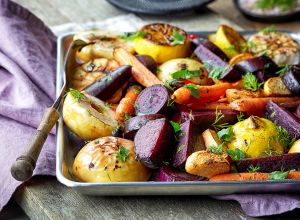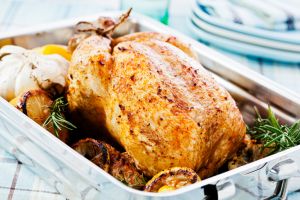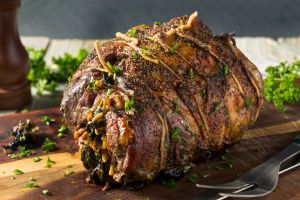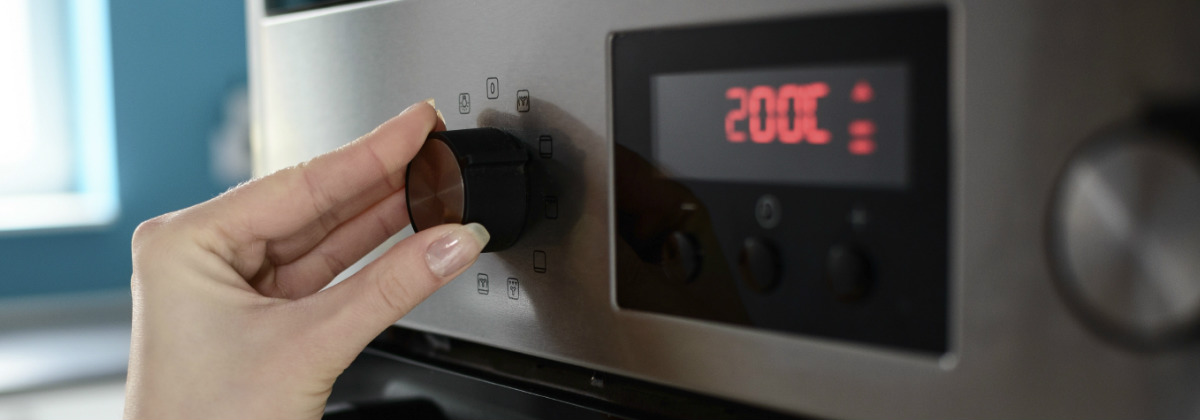Approaching cooking in an oven can go one of two ways – perfectly cooked food that tastes amazing or burnt, crispy, dry food. The best way to avoid the latter is to better understand what temperature you should be cooking different foods at, as well as what settings your oven has. Some foods will cook well under a standard temperature, however if you’re after a different result and tastier food, getting to know what temperature you should cook your favourite food at may help up your cooking game.
The basics for oven temperatures
Most people will assume that 180°C is the stock standard to use across all kinds of cooking in the oven, but that isn’t always the case. To get across the basics, here is what you need to know about oven temperatures:
- Low oven temperature: low oven temperature is considered to be between 120-150°C and is good for slow roasting and tenderising tough cuts of meat. This is akin to a slow cook temperature in the oven if you don’t have a slow cooker.
- Moderate oven temperature: a medium oven temperature is 180°C and is a good baseline temperature for most meals from cakes to vegetable bakes.
- High oven temperature: a high oven temperature is 200-230°C and is best for quick roasting lean meats and cuts of fish.
Oven temperature for cooking different food
It can be tough to decipher exactly which temperature you should use for different kinds of foods. Do you need a higher temperature for one result but a lower temperature to avoid it drying out? We’ve broken down the basics of cooking temperatures for main types of food.
Oven temperature for cooking vegetables

Vegetables are the go-to for oven cooked foods and while they are a fairly simple type of food to prep and cook, you may need different temperatures for different results. For roasting your basic vegetables like potato, carrot, pumpkin and onion, 220°C for 30-45 minutes should get you perfectly roasted and crispy veges.
It’s always best to keep an eye on your vegetables while in the oven and turn them to get an even cook, and for people who may not like them as crispy, stick to around 25 minutes for cooking.
Oven temperature for cooking meats
Cooking meat is a different ball game in the oven and each kind needs different temperatures and times. White meat and red meat all need very different environments to cook in, particularly if you want them cooked correctly and want to avoid any kind of contamination or raw meat.
Oven temperature for cooking pork
Pork is a popular Sunday roast and Christmas meal and when cooked perfectly goes down a treat at the dinner table. There are a few factors to consider when cooking pork, like the weight of the cut and whether it has a bone or not. If it has a bone you will want to cook it for a little longer, so for about 30-40 minutes at 220°C and then an extra 15-20 minutes dropping it to 180°C. The same can be said for cuts without the bone, but always double check your meat is cooked through with the bone in.
Oven temperature for cooking chicken

Chicken is a simple classic that’s beloved in many Aussie households. Because they have bones, they will take a little longer to cook but are still a fairly straightforward meat to cook. Start off around 180°C for 25 minutes then drop the temperature to 165°C and cook for a further 45-60 minutes checking as you go. It’s best to check the internal temperature with a thermometer which should return a 65-70°C reading to avoid any salmonella contamination.
Oven temperature for cooking beef
Beef creates a whole other set of rules when cooking in the oven depending on how you like your meat cooked. For rib eye, rump, sirloin, fillet and rib roast, an oven set at 200°C will get the job done, with those after rare only having to wait between 15-30 minutes, medium lovers will have to wait an extra five minutes and those preferring their beef well done are recommended to cook between 25-30 minutes.
For those cooking beef silverside, blade, round, topside, eye round or oyster blade beef, drop the temperature down to 160°C and cook 20-25 minutes for rare, 25-30 for medium, and 30-35 for well done.
Oven temperature for cooking lamb

Lamb is arguably one of the richer and more flavourful types of red meat making it a tasty choice to cook. Topside roasts and lamb rumps will need an oven temperature of 220°C for 15-20 minutes for rare, 20-25 minutes for medium and 25-30 minutes for well done.
A rack of lamb and crown roast will require a slightly lower temperature of 200°C, while requiring a minimum 20-25 minutes for rare, and up to 45 minutes for well done. Finally, if you’re cooking loin, leg or shoulder, you’ll only need to preheat an oven to 180°C, with cook times between 20 and 35 minutes depending on your preferences. To check how rare it may be you can stab a skewer into the meatiest part and if blood runs out it may still need some time to cook.
Thermometer temperature for cooking
Outside of monitoring the temperature of your oven itself, another sure-fire way to make sure your food – particularly meat – is cooked correctly is using a thermometer. The NSW Food Authority has a simple list of the minimum core temperatures that you will want your meats to reach as a general guide.
Which oven is the best for cooking?
Which oven is best for cooking will come down to a number of factors, but ultimately is about personal preference. There are plenty of different types of ovens that serve different cooking purposes like steam ovens and pyrolytic ovens for easy cleaning. If you’re buying an oven, it’s worthwhile weighing up how much cooking you do, how many people you regularly feed and what kinds of food you cook each week. If you’re stuck on which oven to buy you can compare ovens below to help make a decision.



Share this article